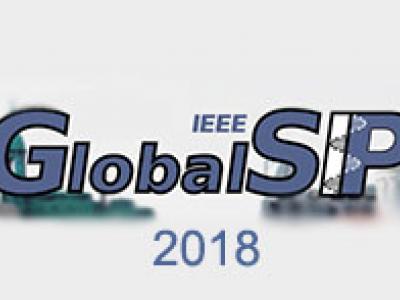- Bayesian learning; Bayesian signal processing (MLR-BAYL)
- Bounds on performance (MLR-PERF)
- Applications in Systems Biology (MLR-SYSB)
- Applications in Music and Audio Processing (MLR-MUSI)
- Applications in Data Fusion (MLR-FUSI)
- Cognitive information processing (MLR-COGP)
- Distributed and Cooperative Learning (MLR-DIST)
- Learning theory and algorithms (MLR-LEAR)
- Neural network learning (MLR-NNLR)
- Information-theoretic learning (MLR-INFO)
- Independent component analysis (MLR-ICAN)
- Graphical and kernel methods (MLR-GRKN)
- Other applications of machine learning (MLR-APPL)
- Pattern recognition and classification (MLR-PATT)
- Source separation (MLR-SSEP)
- Sequential learning; sequential decision methods (MLR-SLER)

Obtaining aligned spectral pairs in case of non-parallel data for stand-alone Voice Conversion (VC) technique is a challenging research problem. Unsupervised alignment algorithm, namely, an Iterative combination of a Nearest Neighbor search step and a Conversion step Alignment (INCA) iteratively tries to align the spectral features by minimizing the Euclidean distance metric between the intermediate converted and the target spectral feature vectors.
- Categories:
 22 Views
22 Views
- Read more about Fast Implementation of Double-coupled Nonnegative Canonical Polyadic Decomposition
- Log in to post comments
Real-world data exhibiting high order/dimensionality and various couplings are linked to each other since they share
some common characteristics. Coupled tensor decomposition has become a popular technique for group analysis in recent
years, especially for simultaneous analysis of multi-block tensor data with common information. To address the multi-
block tensor data, we propose a fast double-coupled nonnegative Canonical Polyadic Decomposition (FDC-NCPD)
- Categories:
 11 Views
11 Views
- Read more about Fast Implementation of Double-coupled Nonnegative Canonical Polyadic Decomposition
- Log in to post comments
Real-world data exhibiting high order/dimensionality and various couplings are linked to each other since they share
some common characteristics. Coupled tensor decomposition has become a popular technique for group analysis in recent
years, especially for simultaneous analysis of multi-block tensor data with common information. To address the multi-
block tensor data, we propose a fast double-coupled nonnegative Canonical Polyadic Decomposition (FDC-NCPD)
- Categories:
 20 Views
20 Views
- Read more about Deep Ptych: Subsampled Fourier Ptychography Using Deep Generative Priors
- Log in to post comments
This paper proposes a novel framework to regularize the highly illposed and non-linear Fourier ptychography problem using generative models. We demonstrate experimentally that our proposed algorithm, Deep Ptych, outperforms the existing Fourier ptychography techniques, in terms of quality of reconstruction and robustness against noise, using far fewer samples. We further modify the proposed approach to allow the generative model to explore solutions outside the range, leading to improved performance.
- Categories:
 62 Views
62 Views
- Read more about Robust Subspace Clustering by Learning an Optimal Structured Bipartite Graph via Low-rank Representation
- Log in to post comments
- Categories:
 20 Views
20 Views
- Read more about Robust Subspace Clustering by Learning an Optimal Structured Bipartite Graph via Low-rank Representation
- Log in to post comments
- Categories:
 8 Views
8 Views
- Read more about Denoising Gravitational Waves with Enhanced Deep Recurrent Denoising Auto-Encoders
- Log in to post comments
- Categories:
 10 Views
10 Views
- Read more about ACTIVE LEARNING WITH LABEL PROPORTIONS
- Log in to post comments
Active Learning (AL) refers to the setting where the learner has the ability to perform queries to an oracle to acquire the true label of an instance or, sometimes, a set of instances. Even though Active Learning has been studied extensively, the setting is usually restricted to assume that the oracle is trustworthy and will provide the actual label. We argue that, while common, this approach can be made more flexible to account for different forms of supervision.
- Categories:
 85 Views
85 Views
- Read more about Defending DNN Adversarial Attacks with Pruning and Logits Augmentation
- Log in to post comments
Deep neural networks (DNNs) have been shown to be powerful models and perform extremely well on many complicated artificial intelligent tasks. However, recent research found that these powerful models are vulnerable to adversarial attacks, i.e., intentionally added imperceptible perturbations to DNN inputs can easily mislead the DNNs with extremely high confidence.
- Categories:
 21 Views
21 Views
- Read more about Defending DNN Adversarial Attacks with Pruning and Logits Augmentation
- Log in to post comments
Deep neural networks (DNNs) have been shown to be powerful models and perform extremely well on many complicated artificial intelligent tasks. However, recent research found that these powerful models are vulnerable to adversarial attacks, i.e., intentionally added imperceptible perturbations to DNN inputs can easily mislead the DNNs with extremely high confidence.
- Categories:
 25 Views
25 Views